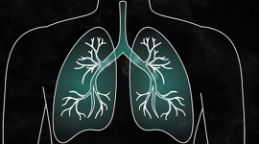What COVID-19 symptoms look like, day by day


By Abby Tang and Emmanuel Ocbazghi From Business Insider
- It can take as few as two or as many as 14 days after being exposed to the novel coronavirus for the first symptom to develop.
- The first symptom of COVID-19 is usually a fever.
- Then come respiratory symptoms, like a dry cough and shortness of breath, that often turn into pneumonia.
- The worst cases often lead to respiratory failure, which could result in death.
- For the latest case total, death toll, and travel information, see Business Insider’s live updates here.
Following is a transcript of the video.
Narrator: At first, you might think it’s a cold. And it could be. But COVID-19 could escalate. Here’s what you need to know.
According to the World Health Organization-China Joint Mission on COVID-19, as of February 20, 80% of laboratory-confirmed cases were mild to moderate, 14% were severe, and 6% were critical. Just to be clear, a mild case of COVID-19 is not like a mild cold. The symptoms will still be pretty severe. Anything less than needing oxygen puts you in this category. Severe cases do need supplemental oxygen, and critical ones are defined by respiratory or multi-organ failure.
The symptoms, treatments, and timelines of having the disease vary depending on which category patients fall into. So, let’s break down what having COVID-19 looks like day to day for each level of severity. It can take as few as two or as many as 14 days after being exposed to the novel coronavirus for the first symptom to develop. This is when it might feel like a cold or the common flu. Many patients develop fevers early on. The World Health Organization-China Joint Mission saw that about 88% of people who had COVID-19 had a fever.
Another study out of China showed that while only 44% of patients had a fever on admission to a hospital, 89% eventually developed one. But there have been some cases that led with gastrointestinal symptoms. Diarrhea, nausea, vomiting, and/or abdominal discomfort may appear a couple of days before respiratory symptoms. This isn’t the norm, though, because COVID-19 is a respiratory disease. That means, for most patients, the virus will start and end with the lungs. In the early days of infection, the virus invades lung cells. Specifically, this can damage the cilia, the hairlike projections that move around to keep airways clear of mucus and debris. When cells get infected, they die and shed off, adding to the debris and hindering your body’s ability to keep stuff out of the lungs and trachea. The inflammation causes damage, and damage causes more inflammation, and this cycle could continue until there’s no healthy tissue left. And inflammation might explain why a dry cough is one of the most common symptoms. Same goes for shortness of breath and phlegm production.
Other symptoms that can appear around this time are fatigue, sore throat, headache, joint or muscle pain, chills, and a runny nose. By day five, patients with preexisting conditions might find that they have trouble breathing, and it usually takes about seven days for a person to go to a hospital. Mild cases, though, usually clear up by this time. But those with moderate to critical cases will have developed pneumonia, which can range from non-life-threatening to severe. Recovery time for these patients could be anywhere from a few days to weeks. For some severe and critical cases, though, symptoms can escalate into acute respiratory distress syndrome.
ARDS is an illness that happens when fluid builds up in the lungs. Inflammation triggers a flood of immune cells that are meant to target the infection. They’re usually isolated to infected areas, but sometimes the body goes overboard, which is when the immune cells start killing anything in their path, including healthy cells. ARDS is often fatal. In critical cases, it can lead to respiratory failure, requiring advanced life support, and this is most likely when patients head to the ICU. ARDS treatment includes supplemental oxygen and mechanical ventilation. The goal is to get more oxygen into the bloodstream since the lungs can’t. When this treatment doesn’t work, the lungs are basically too flooded to get any oxygen into your bloodstream.
That’s the cause of most COVID-19 deaths. And even when a patient survives this phase, they could be left with permanent lung damage. SARS punched holes in some infected peoples’ lungs, giving them a honeycomb effect, and these lesions have been seen in people affected by the novel coronavirus too. Early studies found that most people who die of the disease will do so within 14 to 19 days. And, on average, people who recover are released from the hospital after two and a half weeks. But with the most critical cases, recovery could take months. Once a patient is in the recovery period, it’s possible that they could still be contagious. These people should work with their doctors and public-health officials to determine when they’re no longer a risk.
As of now, there is no vaccine for the virus. So the best way to avoid getting sick is to avoid being exposed. COVID-19 spreads easily from person to person through coughing and sneezing. So wash your hands often and avoid close contact with people who are sick and clean and disinfect surfaces that you use daily. COVID-19 should be taken seriously, but most cases are survivable, so stay home, stay clean, and don’t panic.
For more on this story and video go to: https://www.businessinsider.com/novel-coronavirus-covid-19-symptoms-day-by-day-2020-3





